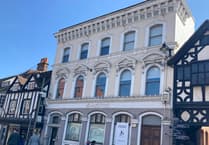The first of the four anniversaries, chronicled in the lasted edition of The Alton Papers published by The Friends of the Curtis Museum and Allen Gallery, is both tragic and macabre as it tells of the misuse of the name of an eight-year-old Alton girl who was murdered 150 years ago.
It was written by Tony Rice, who admits that although he had never heard of the brutal murder was aware of the widespread use of the expression sweet Fanny Adams or sweet FA, meaning nothing or very little at all. Also that sailors at that time likened their rations of tinned beef to Fanny’s remains.
In the article, he sets out to sort fact from fiction and states that Fanny’s murder in August 1867 – this year marks the 150th anniversary of her death – coincided with the new Royal Naval issue of canned meat, and because it was so unpopular the sailors gave it the slang name “Fanny Adam”, typical of seagoing humour. As a result, it wasn’t issued after 1871.
However, the author has found that the meat, wrongly referred to as mutton, was issued in 1867 before news of the murder had spread.
The word fanny also appears in “Jackspeak”, an illustrated guide to naval slang, and the Oxford English Dictionary gives definitions of sweet Fanny Adams as “tinned meat” or a euphemism for “sweet f*** all”.
The author states that although the sailors began referring to their tinned meat using the girl’s name after they learned of her murder, in the First World War the initials were used to fit the obscene expletive used by soldiers.
In a detailed account, Mr Rice sets out to dispel the inaccurate references of the use of Fanny’s name but admits that he still isn’t sure if the misuse of her name might finally be laid to rest.
Fanny was found horribly butchered in a hop field near Flood Meadows, Alton, on August 24, 1867. Frederick Baker, a 29-year-old solicitor’s clerk, was hanged for her murder.
In the next chapter, local historian Jane Hurst writes about William Curtis, who became Jane Austen’s apothecary, and there are two references relating to her visit to him in 1817.
On the first, in one of her surviving letters, she states that having been treated by him she felt much better but of the second visit she states “our Alton apothy (her spelling) did not pretend to be able to cope with it” – referring to her illness.
She died that same year in Winchester, probably from Addison’s Disease or Hodkin’s Lymphoma for, at the time, there was no known cure.
William Curtis came from a distinguished medical family and he and his wife Elizabeth were both Quakers who worshiped at the Alton Quaker Meeting House. They had 10 children and lived at 4 High Street, Alton, which had a large garden which the family loved.
The book details their lives and that of their children and relatives and how the eldest son, William, also became a doctor and went into partnership with his father. Both William senior and his father, James, also a doctor, “looked after the health of the poor in many local villages” and on one page there is a bill showing the medicines they prescribed and the cost.
You also get a glimpse of Alton when it was a rural town form the description by William’s daughter Maria of the annual hay party her grandparents gave in a field by Kings Pond, with tables laden with “sumptuous fare in the centre”.
Also, a description of the garden behind the family home with fine copper beeches and a large summerhouse with a roof thatched with heather.
The centenary of the Battle of Jutland (1916-2016) by Christine Weeks is the next anniversary written last year and a reminder of the eight local men who were among the thousands who died during the battle, one of the worst sea tragedies of the First World War.
In July last year, Christine and two friends went on a cruise to the Baltic and passed over the vicinity of Denmark’s Jutland Peninsular where the battle took place and she scattered flowers over the spot in tribute of her husband Bill’s grandfather, William Weeks, who was one of the eight Alton men who died.
William was a petty officer stoker on HMS Invincible when he died aged 33 leaving a widow and three young children. The other local men were Wyndam James Allwork, ordinary seaman, aged 18 whose parents lived in Plevna Place, Alton; H Arnold from Mill Court, near Froyle; Arthur Christmas, Petty Officer Stoker aged 33, from Alton; George Keeling, Leading Seaman of Woodbine Cottages, Alton; Francis Knight, Acting Leading Stoker, whose parents lived in Normandy Street; Ernest Norris, Able Seaman of Ackender Road; and Charles White, Stoker First Class of Amery Street.
She also lists the ships they served on and there is an illustration of a “Death Penny” commemorating William Weeks and a certificate from the townspeople of Alton in remembrance of Wyndham Allwork.
The last anniversary, again referring to 2016, celebrates 150 years of the founding of Alton Infant School, on Normandy Street, and in July last year and parents and guests were entertained by teachers and pupils in Victorian costume. This was followed by an exhibition of the school’s achievements at the Allen Gallery.
It has been written by Caroline Taylor, who states that the school’s history goes back to 1843 when a British School was established in Church Street, Alton, with 29 boys and six girls.
A year later, it moved to a room at the rear of the Independent Chapel on Normandy Street, but for boys only, and the girls were moved to Turk Street in 1845.
Four years later, it was brought under government control and not long after 1909 a new girls’ school was built to the east of the boys’ school which was then converted into the infants and the boys moved into the building behind.
Builder Frederick Crowley donated the land on Normandy Street for the building of the new British Boys’ School. The conveyance of the freehold of land and premises states “the school should be used for the education of the children of poor persons in the parish of Alton”.
In 1908, the name of the school changed to the Alton Normandy Street School and it transferred to the local authority in the same year.
The school log books provide a fascinating insight into day-to-day activities at Normandy Street School which included, in those early days, children allowed time off to go hop picking or even the circus, but more recent pupils will remember the coronation of the Queen and the conquering of Everest.
The effects of the two world wars on the school, the freezing winters when there was no heating, the setting up of the school meals, the arrival of the first computer in 1984, the illnesses and diseases the children suffered from in the early to middle of the 20th Century and at times shut the school all make fascinating reading.
Also touching are the memories of school days past contributed by some of the pupils which bring to life the 150-year history of the Normandy Street School, whose only heating in those early days was an iron stove called the ‘Tortoise’ and how things changed when electricity was installed in 1959.
Alton Paper 20: The Anniversaries is on sale at the Curtis Museum and Allen Gallery.




